25 Bioclimatic Dwellings
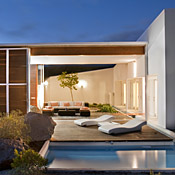
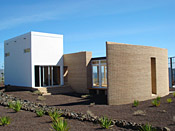
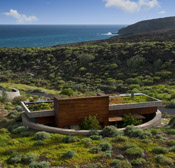
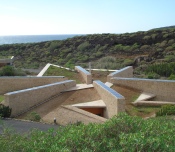
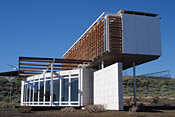
This estate consists of 25 houses, built following bioclimatic criteria (taking into account the climatic conditions of the place, using recycled and recyclable materials, etc) and optimizing the environmental conditions (renewable energy integration, water and waste processing, etc).
The main aim of the project is finding a combination of strategies that allow achieving sustainable solutions to the energy problem in buildings. The solutions presented by each bioclimatic design open new ways to get the maximum integration of renewable energy systems in habitable structures.
Village of 25 Bioclimatic Dwellings for the Island of Tenerife
History
The Cabildo Insular of Tenerife and ITER as promoters, and the Architectural Association of the Canary Islands (COAC) as organizer, summon on March, 1995, an International Contest of drafts, which was approved by the International Union of Architects (U.I.A). The aim of the contest was to select 25 proposals of houses that were designed under the premise of the highest bioclimatic use, using recycled or able to be recycled materials as far as possible, which would adapt the buildings estate to ITER's lands in Tenerife.
About 400 projects of architects from 38 different countries took part in the contest and the winning building was "La Geria", which is a project of the architect César Ruiz-Larrea and is based on a kind of agricultural buildings used in Lanzarote Island.
Situation
The 25 bioclimatic dwellings are located on the coastline of the southern part of the island of Tenerife, along a dry ravine.
The main reason for choosing this location lies in its special climatologic conditions: large number of sun hours, constant winds (mainly from the East and Northeast) with a considerable force scarce rainfall and arid land. Nevertheless, its situation near the coast enables experiences on water desalination using RE.
Monitoring
Each house will have several sensors that will measure certain common parameters for a later monitoring and analysis, and other specific ones depending on the main characteristics of each dwelling (wind speed and direction in air tubes, temperature or humidity in special places, etc.).
The devices for each house include:
- Vertical temperature profile probes/tests
- Inside/Outside wall temperature probes
- Humidity probes
- Air flow measuring device
- People presence sensors
- CO2 and dust measuring device.
These sensors will be complemented with weather stations, which will measure parameters such as sun radiation, outside temperature, pressure, humidity and particles. In addition there will be energy consumption and generation registers which will discriminate the source (PV panels, wind turbine, other RE or the grid). All data will be collected in a concentrator that will process all the information and send it, with a specific protocol, and, eventually, to a local computer for individual data acquisition.
It will also serve as a storage unit allowing, with the use of several devices, a real-time monitoring of the performance of the dwellings and data processing for a desired time space.